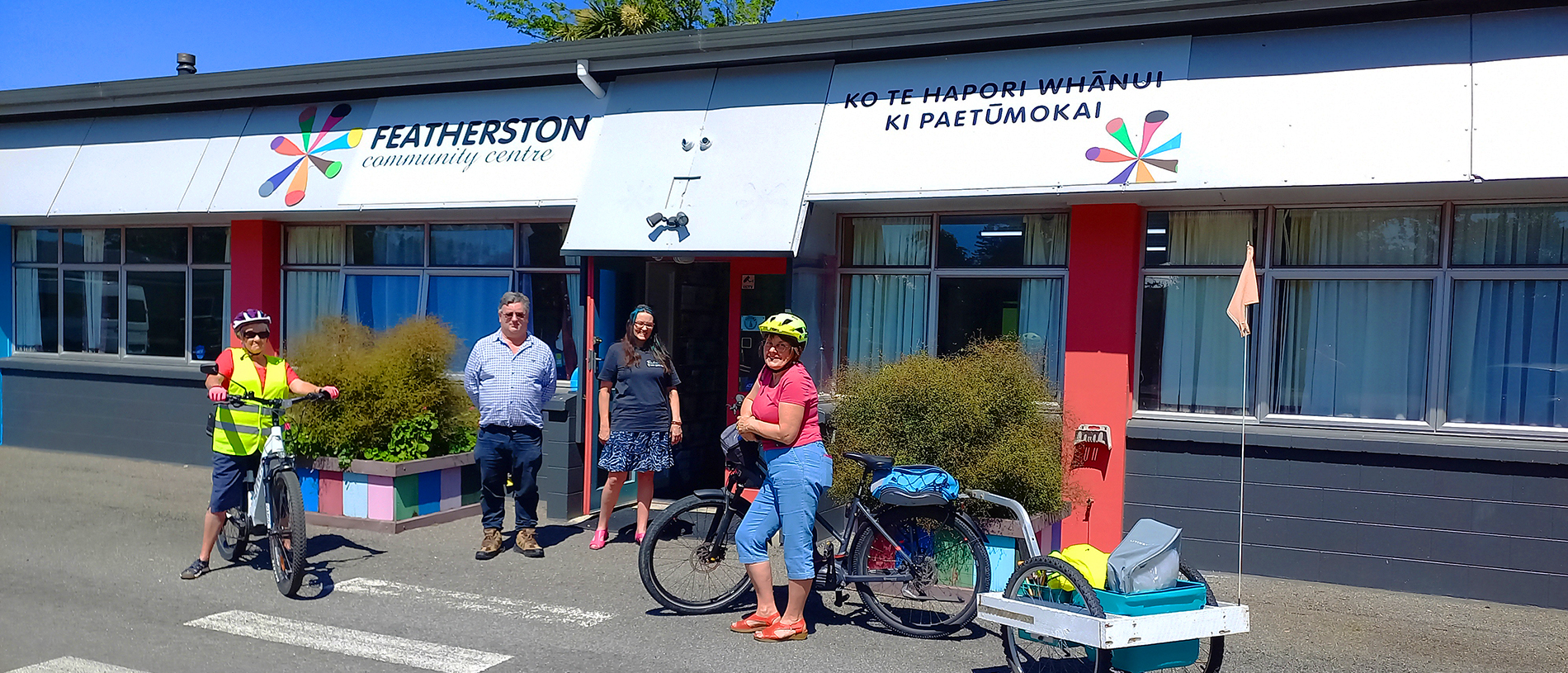
Featherston Community Centre
Friendships, crafts, workshops and social connections are forged at the Featherston Community Centre.

Less than four kilometres from Auckland’s Sky Tower, a hot house in a paddock in one of New Zealand’s wealthiest city-fringe areas shelters tomato plants, cucumber, beans and salad crops. Over a farm fence, a path winds through an established food forest of banana, fig, pear, apple, citrus, tamarillo, persimmon and avocado trees.
This is Kelmarna Community Farm on the border of Ponsonby and Herne Bay, a certified organic plot of 1.7 hectares on Hukanui Crescent. Previously known as Kelmarna Gardens, it opened in 1981 on land leased from Auckland Council. Despite the farm being here for more than four decades, many people don’t know it exists and first-time visitors are often surprised.
“People say how beautiful it is and that they didn’t know it was here,” says Sarah McFadden, Kelmarna Community Farm’s General Manager. “They’re so surprised to walk in off a residential street and discover this oasis. It’s a place of peace and calm in a hectic city.”

A handful of staff work with the help of volunteers to grow climate-friendly food here, but there are other benefits. “When people come to a space like Kelmarna, a big part of the joy and fulfilment they experience is the community and feeling part of something – having a place they feel they belong to,” Sarah says.
Kelmarna welcomes visitors, whether it’s to look around, volunteer, visit the farm shop, or donate food scraps to its compost system.
“Community gardens are great places for people from all walks of life to come together, learn from each other, share knowledge and help each other out.”
Its farm shop is open Wednesdays and Saturdays, offering seasonal organic produce, fresh eggs and seedlings. Kelmarna also offers a vege box subscription service where a one-off seasonal payment buys a produce box for weekly pick-up, the contents dependent on the season and the garden’s yield. There is currently a waiting list.
Early childhood and school groups come regularly. “It's such a wonderful outdoor-learning environment and gives them the opportunity to get hands-on and explore things. Sometimes they're a bit hesitant about some of the different life-forms in the gardens, like worms and other creatures; all the more reason for them to have some exposure and understand the part those organisms play. But kids generally love getting their hands in the soil,” Sarah says.

Kelmarna Community Farm first opened to showcase self-sufficiency and organic growing at a time when organic food production was not mainstream. For more than 20 years it was managed by Framework Trust, an organisation that supports people living with mental illness. In 2015, Framework Trust moved on and since then, Kelmarna Community Gardens Trust has run the farm directly.
Helping people living with mental illness through horticultural therapy is still a big part of what Kelmarna does. “Many of the participants have been coming for years and go back to our history with Framework Trust. It’s really helpful and important for them to have that continuity and connection. They describe it as a place they feel comfortable, welcome and safe. One of our staff runs the programme and works most directly with them and they’re integrated into all of the activities we do. The focus is not on the individual and their problems, the focus is on the gardening. Healing comes through the experience of being in the gardens and being with other people in this community,” she says.
In past years, the farm’s paddocks have been home to grazing stock from Mt Albert Grammar School’s farming department and Jafa, a Welsh Timor pony. With Kelmarna’s focus on regenerative food production, Jafa and the school’s animals have moved on.

“We’ve now got sheep and hens. We want to integrate animals into this regenerative system. Part of connecting New Zealanders to the food we eat involves meat to some degree because 97% of the population eats meat. Twice a year, we take the lambs to slaughter. We work with a sustainable butcher, using as much of the animal as possible, and we work with a local abattoir, so the animals are not being transported too far. As much as we can, we take care of the animals,” Sarah explains.
“Our grand aim for Kelmarna is a resilient, healthy community that regenerates the natural environment and is connected to the land, our food and each other. We’re on a journey towards this and one of the highlights is when a wonderful combination of activities happens on a site like this, it can be very meaningful to the community.”
Story by Penny Lewis for the Summer 2023 issue of AA Directions Magazine. Penny Lewis is an Auckland-based freelance writer.